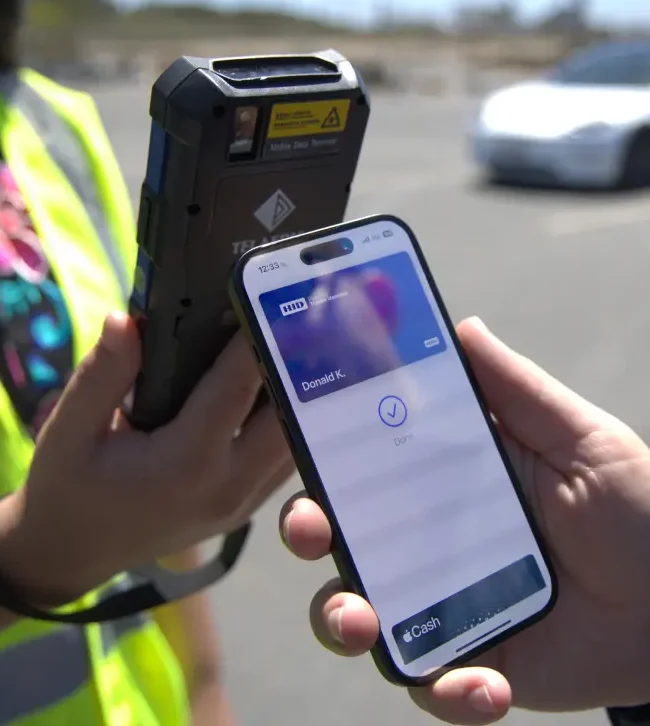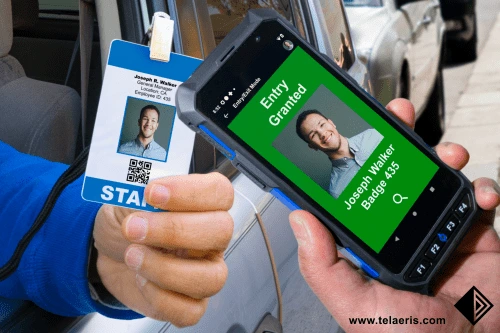Telaeris and Mobile Access Control
In 2008, Telaeris has coined our XPressEntry system as a “Mobile Access Control System.” Our handheld badge readers perform most of the functions that a fixed Physical Access Control System (PACS) provides plus more, including:
- Identity verification / Badge validation
- Entry/Exit tracking
- Remote opening of doors
- Event attendance management
- Emergency mustering / Evacuation tracking
It made perfect sense to us to replace “Physical” in PACS with “Mobile” to get “Mobile Access Control” as a description. Even earlier, in 2006, we built a mobile access panel with wireless readers into a cart, which we called our MACS – Mobile Access Control System (we even blogged about it in Don’t Get Off the Bus!). By 2010, we ranked at the top of Google search results for “mobile access control”.
The Battle for the Keywords
However, the world moves on, as do definitions. Around 2011, HID Global launched a significant PR campaign centered around redefining “Mobile Access Control” to mean using a cell phone and an app to unlock a door. After years of HID’s PR campaign, they and other vendors continue to pay big bucks to fight for control of these keywords on Google. This was a great video HID produced early on, showing how convenient “Mobile Access Control” could be.
The industry took the term in a new direction. By 2019, searching for “mobile access control” showed cell phones being used to open doors. Telaeris’ original definition doesn’t show up until the 5th page.
Cell Phones at the Door
By today’s industry standards, using a smartphone to access a door reader is the definition of “Mobile Access Control.” Other accepted terms include “Mobile Access Credentials” or “Smartphone Access Card.” Regardless of what you call it, here is how we at Telaeris now define it:
“Mobile Access Control” is the use of an app on an NFC or BLE enabled smartphone to open a door.
For most physical access, employees open doors using their badge (RFID, magstripe, or other technology), PIN, and/or biometric credential. However, as everyone now always has their phones with them, the industry identified smartphones as a new medium for storing credentials. This transition is aided by Apple iOS and Google Android both embracing Bluetooth Low Energy (BLE) and Near Field Technology (NFC) communications.
The use of the cell phone to open a door or gate provides a few really nice features, specifically:
- Range – BLE Range can be meters instead of inches
- Convenience – People often have their cell phones in their hands.
- No Extra Hardware – Just the phone and app.
However, there are still many challenges for this technology. Unlike the old trifecta of Card/PIN/Biometrics, which always work, the credential on your cellphone may not work if the battery is dead. Additionally, the market is unfortunately fragmented. Each vendor has its competing, proprietary infrastructure, which requires the replacement of all readers at your points of access. Mobile credentials also come with significant up-front costs and management overhead. Lastly, these credentials are subject to attack vectors that differ from those security personnel see with physical credentials.
“Handheld Badge Readers” It Is

So we lost the battle for the “Mobile Access Control” keywords. Where does that leave us now? Hoping our customers will click down five or more pages until they find us? Certainly not!
When people search for us, they search for “handheld badge reader” products. By listening to how our customers refer to us internally and externally, we shifted how we market ourselves, to great success.
In a strange “twist” of fate, customers started asking us to support HID’s mobile credentials. And since we’re a certified HID partner, our XPID handhelds can authenticate their app-based credentials, too. What wonderful irony! Using a handheld device to read a mobile access credential in any location for any purpose. “Mobile Access Control,” indeed.
Final Take
Words change. Technology shifts. But our mission remains the same: help organizations secure their sites and protect their people.
At Telaeris, we don’t just make mobile access possible—we make it practical, deployable, and field-proven. Whether you call it “mobile access control” or just a handheld badge reader, we’re here to help you get the job done.
Want to learn more about how XPressEntry can bring access control to the field? Contact us today.
Updated in June 2025 for clarity and relevance

